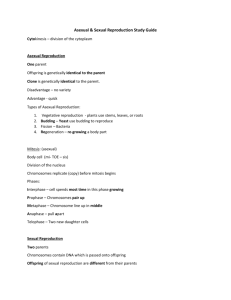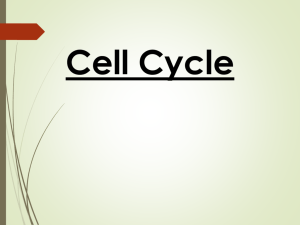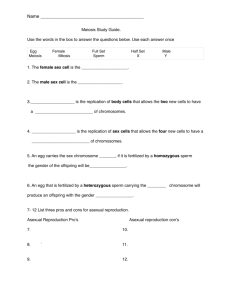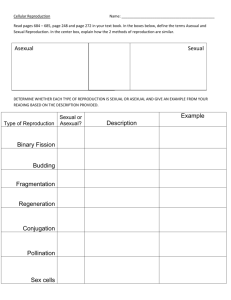Asexual and Sexual Reproduction
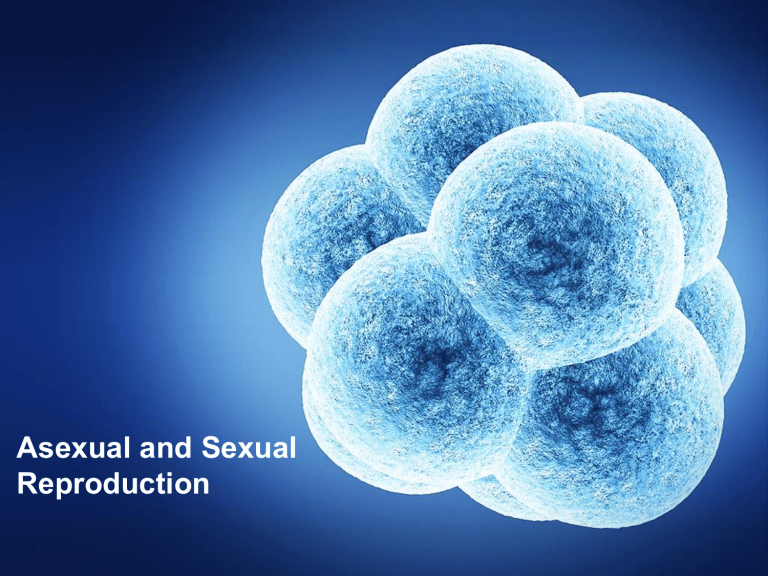
Asexual and Sexual
Reproduction
Key Concepts and Vocabulary
Key Concepts:
• Differences between asexual and sexual reproduction
• What is a chromosome?
• Why do different cells have different numbers of chromosomes?
Key Vocabulary:
• Asexual
• Sexual
• Chromosome
• Haploid
• Diploid
Asexual Reproduction
• Production of offspring that only requires one parent
• Parents and offspring have the same traits
• DNA of the offspring is identical to the parents
• Usually found in unicellular and other simple organisms
• What are some examples of organisms that reproduce asexually?
Types of Asexual Reproduction
• Binary fission –
• Mitosis –
• Budding –
• Fragmentation –
Types of Asexual Reproduction
Sexual Reproduction
• Production of offspring that requires two parents
• What two cells join together in sexual reproduction?
• Parents and offspring can have different traits
• The DNA of the offspring is a combination of DNA from both parents
• Most multicellular organisms reproduce sexually
Sexual Reproduction
• Sexual reproduction produces genetically diverse populations
• Why is genetic diversity important?
Chromosomes
• Structures that contain all the DNA that is passed from parents to offspring during reproduction
• Chromosomes are made of chromatin
• Chromatin is made of tightly wound
DNA
Chromosomes
• Chromosomes have two parts – chromatids held together by a centromere
• Draw and label a diagram of a chromosome below:
• The chromatids are exact copies of each other
Chromosome Numbers
• Most cells in sexually reproducing organisms have two identical copies of each chromosome
• These cells are called diploid cells
• What does diploid mean?
• The two identical chromosomes are called homologous chromosomes
• What does homologous mean?
Chromosome Numbers
• Sperm and egg cells only contain one copy of each chromosome
• These cells are called haploid cells
• What does haploid mean?
• Why would sperm and egg cells only have one copy of each chromosome?
Human Chromosomes
• Human diploid cells have
46 total chromosomes
• How many different chromosomes do human cells have?
• How many chromosomes do human sperm and egg cells have?
